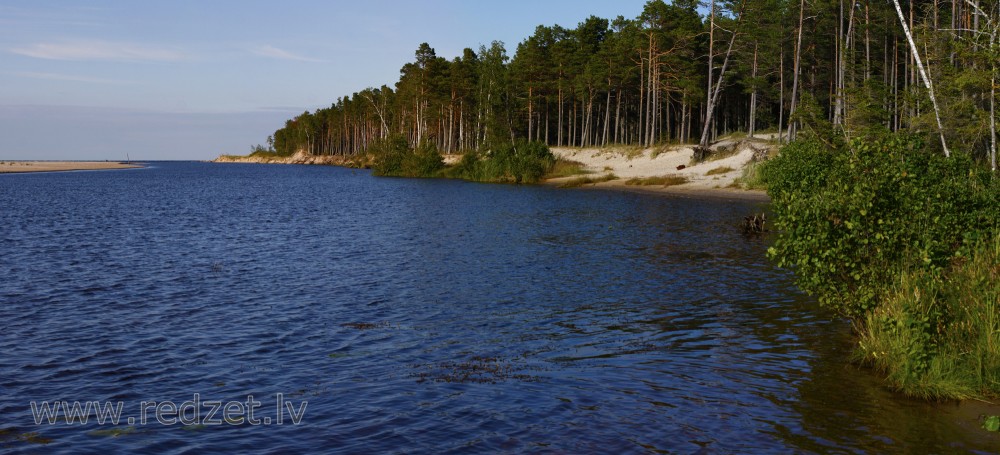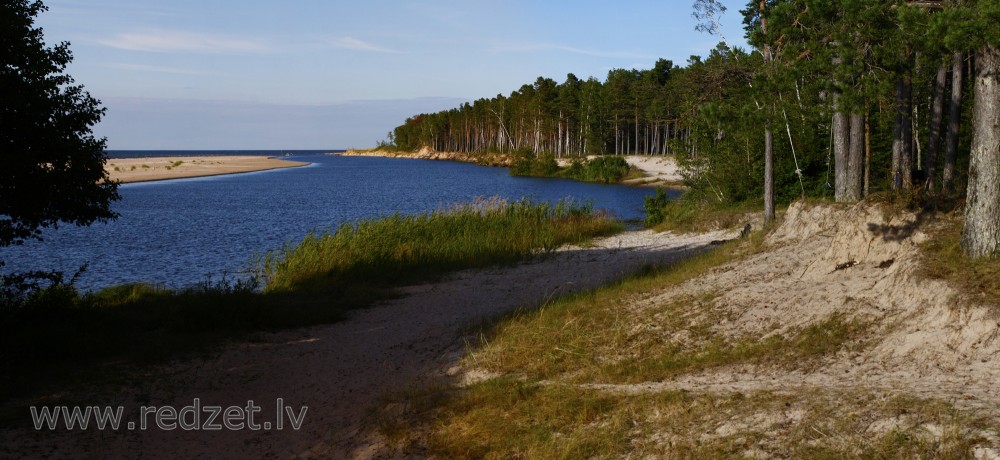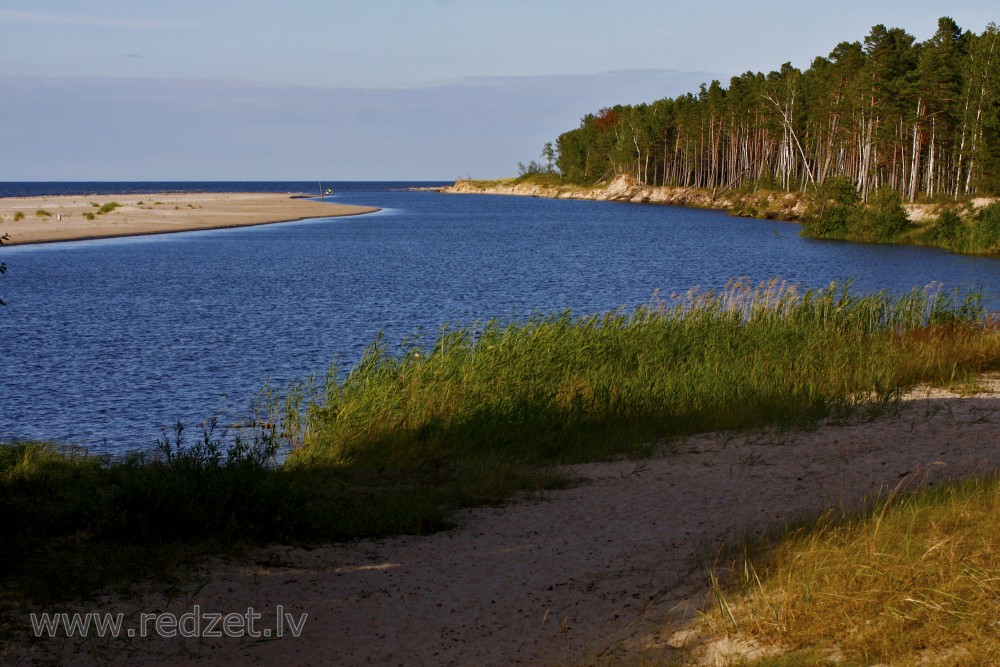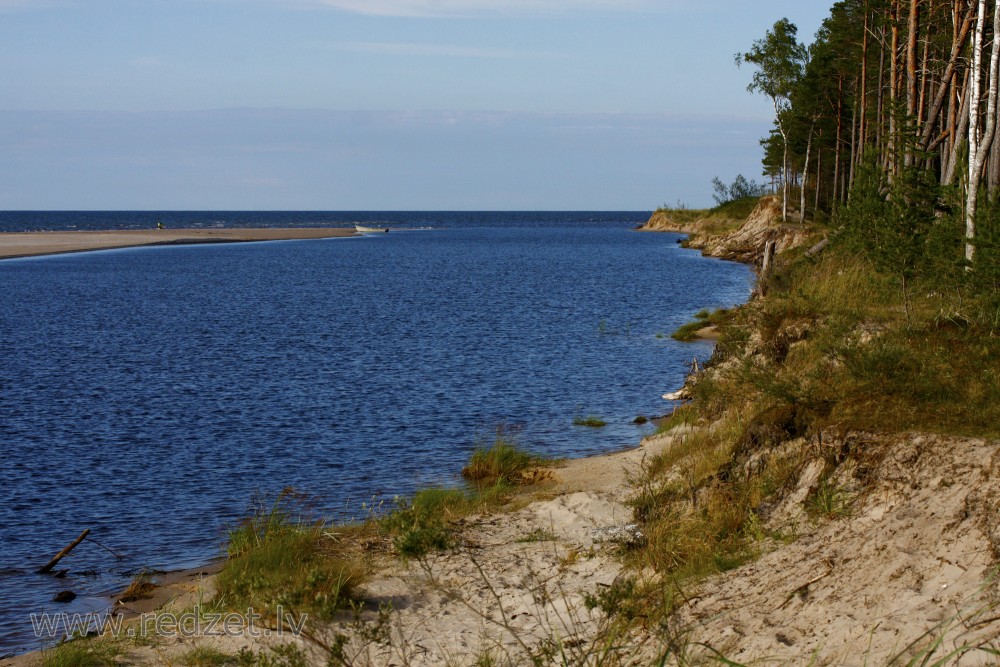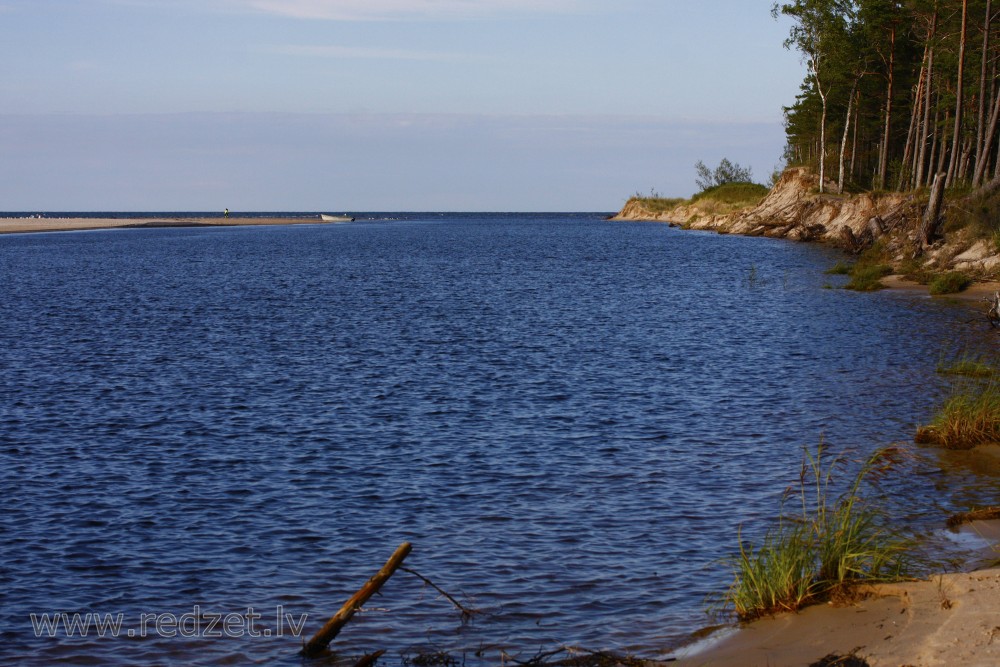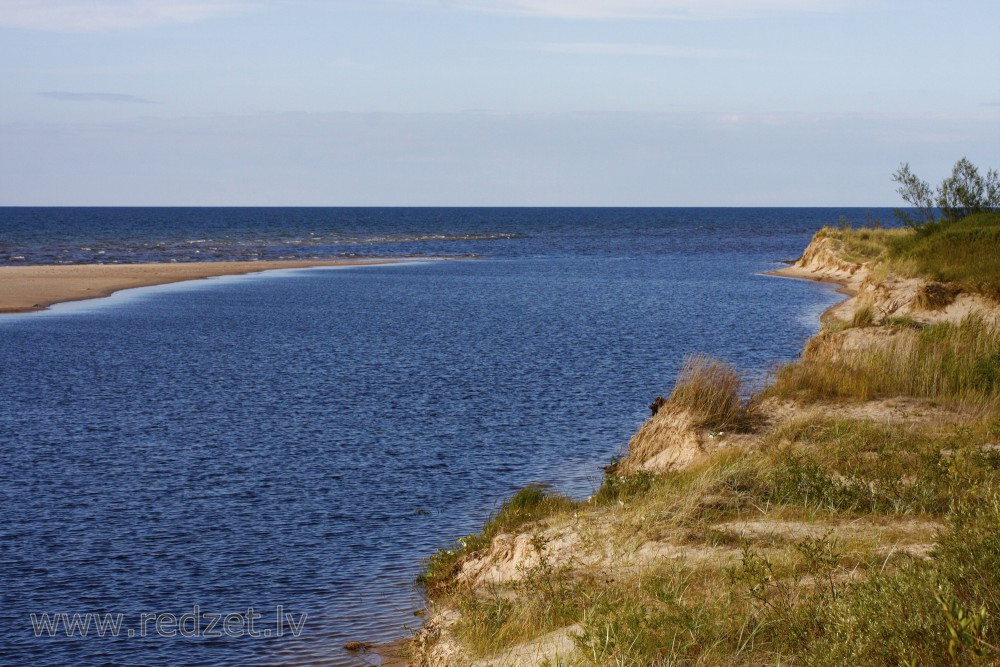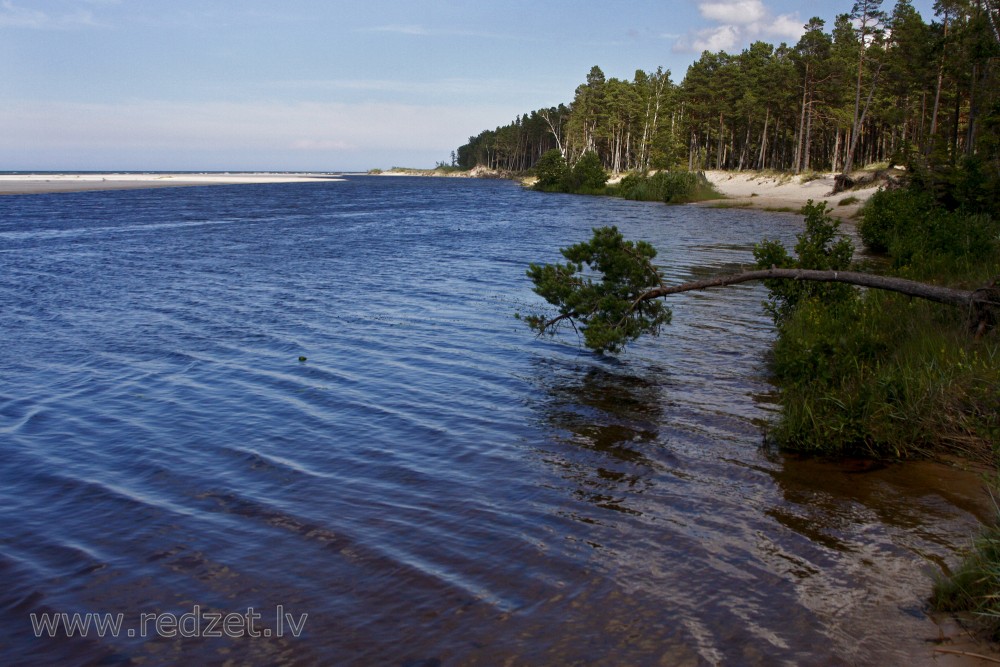River Estuary
An estuary is a partially enclosed coastal body of brackish water with one or more rivers or streams flowing into it, and with a free connection to the open sea.
Estuaries form a transition zone between river environments and maritime environments. They are subject both to marine influences—such as tides, waves, and the influx of saline water—and to riverine influences—such as flows of fresh water and sediment. The mixing of sea water and fresh water provide high levels of nutrients both in the water column and in sediment, making estuaries among the most productive natural habitats in the world.
Most existing estuaries formed during the Holocene epoch with the flooding of river-eroded or glacially scoured valleys when the sea level began to rise about 10,000–12,000 years ago. Estuaries are typically classified according to their geomorphological features or to water-circulation patterns. They can have many different names, such as bays, harbors, lagoons, inlets, or sounds, although some of these water bodies do not strictly meet the above definition of an estuary and may be fully saline.
The banks of many estuaries are amongst the most heavily populated areas of the world, with about 60% of the world's population living along estuaries and the coast. As a result, many estuaries suffer degradation from a variety of factors including: sedimentation from soil erosion from deforestation, overgrazing, and other poor farming practices; overfishing; drainage and filling of wetlands; eutrophication due to excessive nutrients from sewage and animal wastes; pollutants including heavy metals, polychlorinated biphenyls, radionuclides and hydrocarbons from sewage inputs; and diking or damming for flood control or water diversion.
Definition
The word "estuary" is derived from the Latin word aestuarium meaning tidal inlet of the sea, which in itself is derived from the term aestus, meaning tide. There have been many definitions proposed to describe an estuary. The most widely accepted definition is: "a semi-enclosed coastal body of water, which has a free connection with the open sea, and within which sea water is measurably diluted with freshwater derived from land drainage". However, this definition excludes a number of coastal water bodies such as coastal lagoons and brackish seas. A more comprehensive definition of an estuary is "a semi-enclosed body of water connected to the sea as far as the tidal limit or the salt intrusion limit and receiving freshwater runoff; however the freshwater inflow may not be perennial, the connection to the sea may be closed for part of the year and tidal influence may be negligible". This broad definition also includes fjords, lagoons, river mouths, and tidal creeks. An estuary is a dynamic ecosystem having a connection to the open sea through which the sea water enters with the rhythm of the tides. The sea water entering the estuary is diluted by the fresh water flowing from rivers and streams. The pattern of dilution varies between different estuaries and depends on the volume of fresh water, the tidal range, and the extent of evaporation of the water in the estuary.
Classification based on geomorphology
Drowned river valleys
Drowned river valleys are also known as coastal plain estuaries. In places where the sea level is rising relative to the land, sea water progressively penetrates into river valleys and the topography of the estuary remains similar to that of a river valley. This is the most common type of estuary in temperate climates. Well-studied estuaries include the Severn Estuary in the United Kingdom and the Ems Dollard along the Dutch-German border.
The width-to-depth ratio of these estuaries is typically large, appearing wedge-shaped (in cross-section) in the inner part and broadening and deepening seaward. Water depths rarely exceed 30 m (100 ft). Examples of this type of estuary in the U.S. are the Hudson River, Chesapeake Bay, and Delaware Bay along the Mid-Atlantic coast, and Galveston Bay and Tampa Bay along the Gulf Coast.
Lagoon-type or bar-built
Bar-built estuaries are found in place where the deposition of sediment has kept pace with rising sea level so that the estuaries are shallow and separated from the sea by sand spits or barrier islands. They are relatively common in tropical and subtropical locations.
These estuaries are semi-isolated from ocean waters by barrier beaches (barrier islands and barrier spits). Formation of barrier beaches partially encloses the estuary, with only narrow inlets allowing contact with the ocean waters. Bar-built estuaries typically develop on gently sloping plains located along tectonically stable edges of continents and marginal sea coasts. They are extensive along the Atlantic and Gulf coasts of the U.S. in areas with active coastal deposition of sediments and where tidal ranges are less than 4 m (13 ft). The barrier beaches that enclose bar-built estuaries have been developed in several ways:
- building up of offshore bars by wave action, in which sand from the sea floor is deposited in elongated bars parallel to the shoreline,
- reworking of sediment discharge from rivers by wave, current, and wind action into beaches, overwash flats, and dunes,
- engulfment of mainland beach ridges (ridges developed from the erosion of coastal plain sediments around 5000 years ago) due to sea level rise and resulting in the breaching of the ridges and flooding of the coastal lowlands, forming shallow lagoons, and
- elongation of barrier spits from the erosion of headlands due to the action of longshore currents, with the spits growing in the direction of the littoral drift.
Barrier beaches form in shallow water and are generally parallel to the shoreline, resulting in long, narrow estuaries. The average water depth is usually less than 5 m (16 ft), and rarely exceeds 10 m (33 ft). Examples of bar-built estuaries are Barnegat Bay, New Jersey; Laguna Madre, Texas; and Pamlico Sound, North Carolina.
Fjord-type
Fjords were formed where pleistocene glaciers deepened and widened existing river valleys so that they become U-shaped in cross sections. At their mouths there are typically rocks, bars or sills of glacial deposits, which have the effects of modifying the estuarine circulation.
Fjord-type estuaries are formed in deeply eroded valleys formed by glaciers. These U-shaped estuaries typically have steep sides, rock bottoms, and underwater sills contoured by glacial movement. The estuary is shallowest at its mouth, where terminal glacial moraines or rock bars form sills that restrict water flow. In the upper reaches of the estuary, the depth can exceed 300 m (1,000 ft). The width-to-depth ratio is generally small. In estuaries with very shallow sills, tidal oscillations only affect the water down to the depth of the sill, and the waters deeper than that may remain stagnant for a very long time, so there is only an occasional exchange of the deep water of the estuary with the ocean. If the sill depth is deep, water circulation is less restricted, and there is a slow but steady exchange of water between the estuary and the ocean. Fjord-type estuaries can be found along the coasts of Alaska, the Puget Sound region of western Washington state, British Columbia, eastern Canada, Greenland, Iceland, New Zealand, and Norway.
Tectonically produced
These estuaries are formed by subsidence or land cut off from the ocean by land movement associated with faulting, volcanoes, and landslides. Inundation from eustatic sea level rise during the Holocene Epoch has also contributed to the formation of these estuaries. There are only a small number of tectonically produced estuaries; one example is the San Francisco Bay, which was formed by the crustal movements of the San Andreas fault system causing the inundation of the lower reaches of the Sacramento and San Joaquin rivers.
en.wikipedia.org


